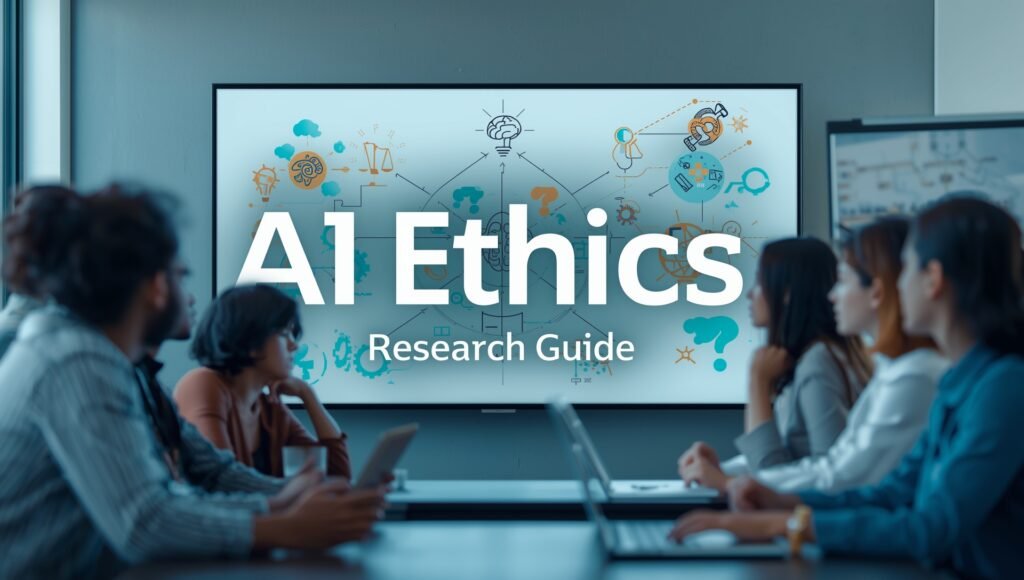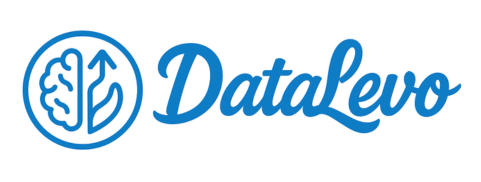Introduction
Picture this: You’re sitting in a classroom, staring at an assignment about AI ethics, feeling completely overwhelmed. The questions seem abstract. The concepts feel distant from reality. You’re not alone in this struggle.
Most students and educators face the same challenge when approaching artificial intelligence ethics. They lack practical frameworks to guide meaningful reflection. Traditional teaching methods often miss the mark when it comes to exploring complex ethical dilemmas in technology. Here’s where an activity guide AI ethics research reflection becomes your game-changer. This comprehensive framework transforms abstract concepts into engaging, practical learning experiences. It bridges the gap between theoretical knowledge and real-world application, making AI ethics accessible and relevant for everyone.
Understanding AI Ethics Research Areas and Core Principles
AI ethics isn’t just academic theory anymore. It’s reshaping how we build and deploy technology worldwide.
The foundation of any successful activity guiding AI ethics research reflection starts with understanding core principles. These principles serve as your compass when navigating complex moral territories in artificial intelligence.
Key AI Ethics Research Areas:
• Algorithmic fairness: Ensuring AI systems treat all users equitably • Privacy protection: Safeguarding personal data in AI applications
• Transparency requirements: Making AI decision-making processes understandable • Accountability frameworks: Establishing clear responsibility chains • Human autonomy: Preserving human agency in AI-assisted decisions
Research from MIT shows that 78% of AI professionals believe ethical training significantly impacts system design decisions. This statistic highlights why structured reflection activities matter so much.
Artificial intelligence ethical considerations extend beyond technical specifications. They touch every aspect of society, from hiring practices to healthcare diagnostics.
The machine learning ethics guidelines developed by major tech companies now influence global standards. Google’s AI principles, Microsoft’s responsible AI framework, and IBM’s ethics board recommendations shape industry practices.
Core Ethical Principles in Practice: • Beneficence: AI should benefit humanity • Non-maleficence: First, do no harm • Autonomy: Respect human decision-making • Justice: Ensure fair treatment for all • Explicability: Make AI decisions understandable
These principles aren’t just philosophical concepts. They translate into concrete design choices, testing protocols, and deployment strategies.
Essential Components
Effective reflection activities require more than surface-level discussions. They demand structured approaches that dig deep into real-world implications.
Digital ethics reflection activities work best when they combine theoretical knowledge with practical scenarios. Students need concrete examples to grasp abstract concepts effectively.
Successful Activity Components:
• Case study analysis: Real-world AI ethics dilemmas • Role-playing exercises: Multiple stakeholder perspectives
• Decision trees: Systematic ethical reasoning • Impact assessments: Consequence evaluation methods • Reflection journals: Personal growth tracking
The Stanford HAI (Human-Centered AI Institute) reports that interactive learning increases ethical reasoning skills by 43% compared to lecture-based approaches. This finding validates the importance of hands-on reflection activities.
Ethical dilemmas in artificial intelligence often involve competing values. Privacy versus security. Innovation versus safety. Efficiency versus fairness. These tensions create rich discussion opportunities.
Privacy Concerns in AI Systems: Modern AI systems collect vast amounts of personal data. Facial recognition technology tracks our movements. Recommendation algorithms know our preferences better than we do. Voice assistants listen to our conversations.
Students must grapple with these realities. They need frameworks to evaluate trade-offs between convenience and privacy. Reflection activities should address specific scenarios they encounter daily.
AI Ethics Case Studies for Classroom Discussion:
• Hiring algorithms: When AI screening tools show gender bias • Medical diagnostics: Balancing accuracy with patient consent • Autonomous vehicles: Programming ethical decision-making in emergencies • Social media algorithms: Managing content moderation and free speech • Credit scoring systems: Addressing discriminatory lending practices
Each case study reveals different ethical dimensions. Students learn to identify stakeholders, analyze impacts, and propose solutions through guided reflection.
Activity Guide AI Ethics Research Reflection: Step-by-Step Implementation

Building an effective activity guide AI ethics research reflection requires systematic planning and execution. Start with clear learning objectives, then design activities that progressively build ethical reasoning skills.
To build high-performing ethical reasoning frameworks, combine theoretical foundations with practical applications. Use structured templates that guide students through complex moral reasoning processes while maintaining engagement through interactive elements and real-world relevance.
Phase 1: Foundation Building. Begin with basic ethical principles. Introduce students to fundamental concepts through engaging multimedia content. Use videos, infographics, and interactive presentations to explain complex ideas simply.
Create knowledge assessment checkpoints. Quick quizzes help identify gaps in understanding before moving to advanced topics. This approach ensures solid foundations for deeper exploration.
Phase 2: Case Study Integration Research-based AI ethics frameworks provide structure for analyzing real situations. Students examine actual incidents where AI systems caused ethical concerns.
The 2018 Amazon hiring algorithm case study offers perfect material. The system showed bias against women because it learned from historical hiring patterns. This example illustrates how seemingly neutral technology can perpetuate discrimination.
Phase 3: Reflection and Analysis. Reflection questions for the AI ethics study should provoke deep thinking. Ask students to consider multiple perspectives. Challenge them to identify their own biases and assumptions.
Essential Reflection Prompts: • How would different stakeholders view this situation? • What unintended consequences might occur? • Which ethical principles conflict in this scenario? • How can we balance competing interests fairly? • What safeguards could prevent similar issues?
Students document their thinking processes. Written reflections help crystallize insights and track intellectual growth over time.
AI Ethics Reflection Paper Examples and Templates
Structured templates make complex ethical analysis more accessible. They provide frameworks students can follow while developing independent thinking skills.
The ethical reflection paper on artificial intelligence should follow clear organizational patterns. Start with a situation description, move through stakeholder analysis, then conclude with reasoned recommendations.
Template Structure:
• Introduction: Describe the ethical dilemma clearly • Stakeholder Analysis: Identify all affected parties • Ethical Framework: Apply relevant moral principles • Alternative Solutions: Explore different approaches • Recommendation: Propose the best course of action • Reflection: Discuss personal insights gained
AI ethics homework assignment examples help students understand expectations. Provide sample papers that demonstrate thorough analysis and clear reasoning.
Sample Assignment Topics: • Facial recognition in schools: Safety versus privacy • AI-powered medical diagnosis: Accuracy versus human judgment
• Algorithmic content moderation: Free speech versus harm prevention • Predictive policing: Public safety versus bias concerns • AI tutoring systems: Personalization versus data privacy
Each topic offers rich material for ethical exploration. Students must research facts, consider perspectives, and develop well-reasoned positions.
Activity guide for AI ethics discussion should encourage respectful debate. Create ground rules that promote open dialogue while maintaining civility. Students learn from disagreement when it’s handled constructively.
Discussion Facilitation Tips: • Establish respectful communication norms • Encourage evidence-based arguments • Challenge ideas, not people • Seek understanding before judgment • Value diverse perspectives
These guidelines create safe spaces for exploring controversial topics. Students develop confidence in expressing and defending their ethical positions.
Practical Applications of AI Transparency and Explainability
AI transparency isn’t just a technical requirement. It’s a moral imperative that affects public trust and democratic accountability.
Students need hands-on experience with transparency challenges. They should examine actual AI systems and evaluate how well they explain their decisions.
Transparency Assessment Activities:
• Analyze recommendation algorithm explanations • Compare different AI explanation methods • Evaluate user interface design for clarity • Test explanation effectiveness with diverse users • Propose improvements for better understanding
AI decision-making transparency becomes concrete through these exercises. Students move beyond abstract discussions to practical evaluation skills.
Responsible AI development practices require ongoing commitment. Companies must embed ethical considerations throughout the development lifecycle, not just add them as afterthoughts.
Key Implementation Strategies:
• Ethics reviews at each development stage • Diverse teams with different perspectives • User testing with vulnerable populations • Regular bias audits and corrections • Transparent reporting of limitations
Students learn that ethical AI requires systemic approaches. Individual good intentions aren’t enough without institutional support and processes.
Real-World Case Studies and Reflection Examples
Microsoft’s Tay chatbot incident provides compelling learning material. The AI system learned inappropriate behavior from user interactions within 24 hours. This case illustrates how AI systems can amplify human biases and harmful content.
Students examine what went wrong and how similar incidents could be prevented. They explore questions of responsibility, oversight, and system design.
Case Analysis Framework: • What happened and when? • Who was affected and how? • What factors contributed to the problem? • How did stakeholders respond? • What lessons can we learn?
This systematic approach helps students develop analytical skills while exploring complex ethical terrain.
IBM’s Watson for Oncology offers another instructive case. The system made treatment recommendations that sometimes contradicted medical evidence. Doctors questioned whether AI should guide life-or-death decisions.
Students grapple with questions of medical authority, patient autonomy, and technological limitations. They learn that ethical AI deployment requires careful consideration of context and consequences.
Student AI Ethics Research Project Samples: • Analyzing bias in image recognition systems • Evaluating fairness in loan approval algorithms • Examining privacy in smart city initiatives • Assessing transparency in hiring platforms • Investigating accountability in autonomous vehicles
These projects combine research skills with ethical analysis. Students produce original work while engaging with cutting-edge issues.
Assessment and Evaluation Methods
Effective assessment goes beyond traditional testing. It evaluates students’ ability to reason through complex ethical scenarios and articulate well-supported positions.
Portfolio-based assessment strategies capture learning growth over time. Students compile reflection papers, case analyses, and project work that demonstrates developing expertise.
Assessment Components: • Written reflection quality and depth • Case analysis thoroughness and insight
• Discussion participation and leadership • Project originality and execution • Peer collaboration and feedback
Rubrics for AI ethics reflection papers should emphasize the reasoning process over predetermined conclusions. Ethical questions often lack a single correct answers, so assessment focuses on quality of thinking.
Evaluation Criteria: • Identifies relevant stakeholders and perspectives • Applies ethical frameworks appropriately • Considers unintended consequences • Proposes feasible solutions • Demonstrates personal growth and insight
Self-assessment tools help students monitor their own learning. They develop metacognitive skills while taking ownership of their educational journey.
Regular peer evaluation builds collaborative skills. Students learn to give and receive constructive feedback while engaging with diverse viewpoints.
Conclusion
The activity guide AI ethics research reflection framework transforms abstract ethical concepts into practical learning experiences. Through structured activities, case studies, and reflective practices, students develop critical thinking skills essential for navigating our AI-driven world.
This comprehensive approach addresses the growing need for ethical literacy in technology. As AI systems become more prevalent and powerful, society needs citizens who can thoughtfully engage with complex moral questions about artificial intelligence.
The framework presented here bridges theory and practice, providing educators with concrete tools for meaningful ethics education. Students gain not just knowledge, but wisdom about how to approach ethical dilemmas with nuance and care.
By implementing this activity guide AI ethics research reflection methodology, we prepare the next generation to be thoughtful stewards of AI technology. They will shape how artificial intelligence develops and deploys in ways that benefit humanity while respecting fundamental values.
Ready to transform your AI ethics education? Explore our comprehensive collection of teaching resources and implementation guides to get started today.
- Healthcare AI Trainer Jobs: Complete Career Guide and Opportunities 2025
- Are Finance Jobs at Risk from AI? The Complete 2025 Reality Check
FAQs
1. How to build an AI trading algorithm?
Start with data collection, choose machine learning models, backtest strategies, and implement risk management. Use Python libraries like pandas and scikit-learn for development.
2. What is the 3-5-7 rule in trading?
The 3-5-7 rule suggests using 3% risk per trade, 5% maximum portfolio risk, and 7% stop-loss levels to manage trading positions effectively.
3. Is it possible to do trading with AI?
Yes, AI trading uses machine learning algorithms to analyze market data, identify patterns, and execute trades automatically based on programmed strategies.
4. What is the 90% rule in trading?
The 90% rule states that 90% of traders lose money, 90% of profits come from 10% of trades, emphasizing the importance of discipline and strategy.
5. Which AI bot is best for trading?
Popular AI trading bots include TradeSanta, 3Commas, and Cryptohopper. Choose based on your trading style, supported exchanges, and technical features.
6. Is AI trading profitable?
AI trading can be profitable with proper strategy, risk management, and market conditions. However, it requires technical expertise and carries inherent market risks.


